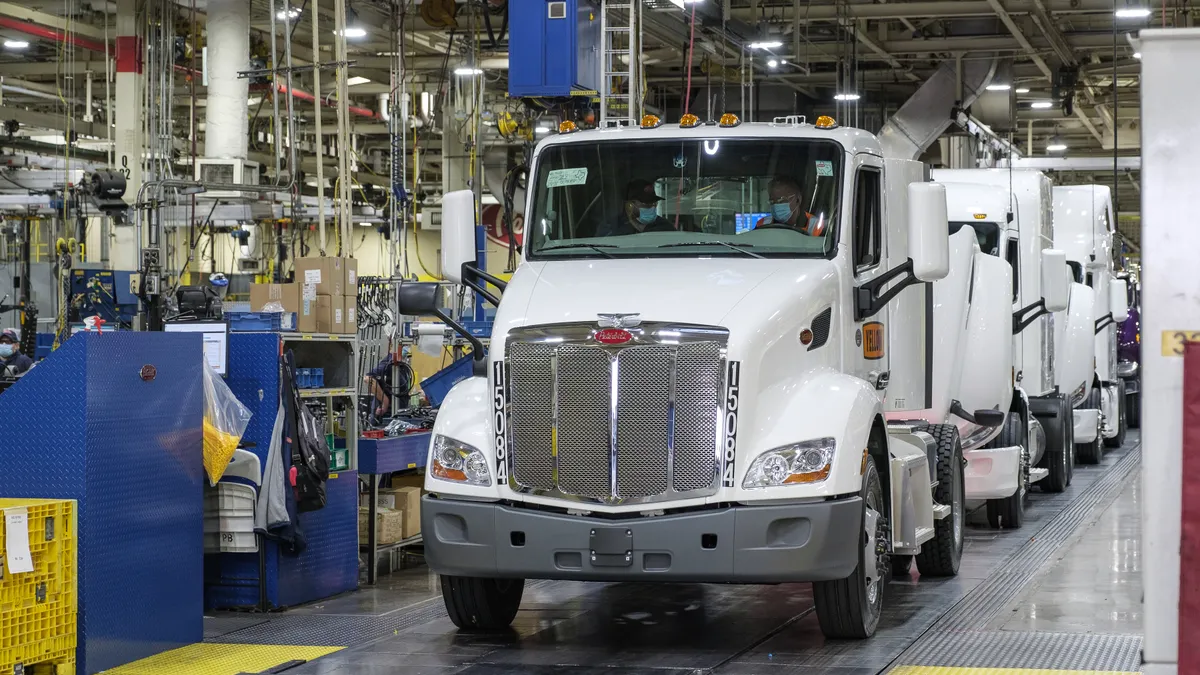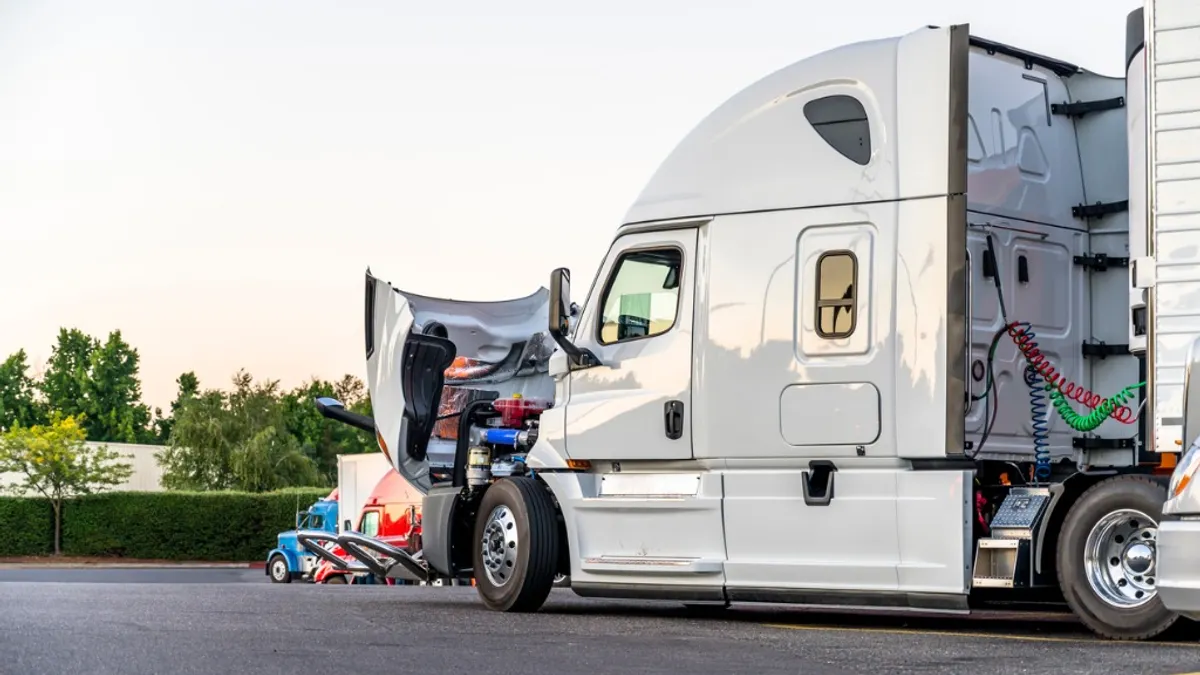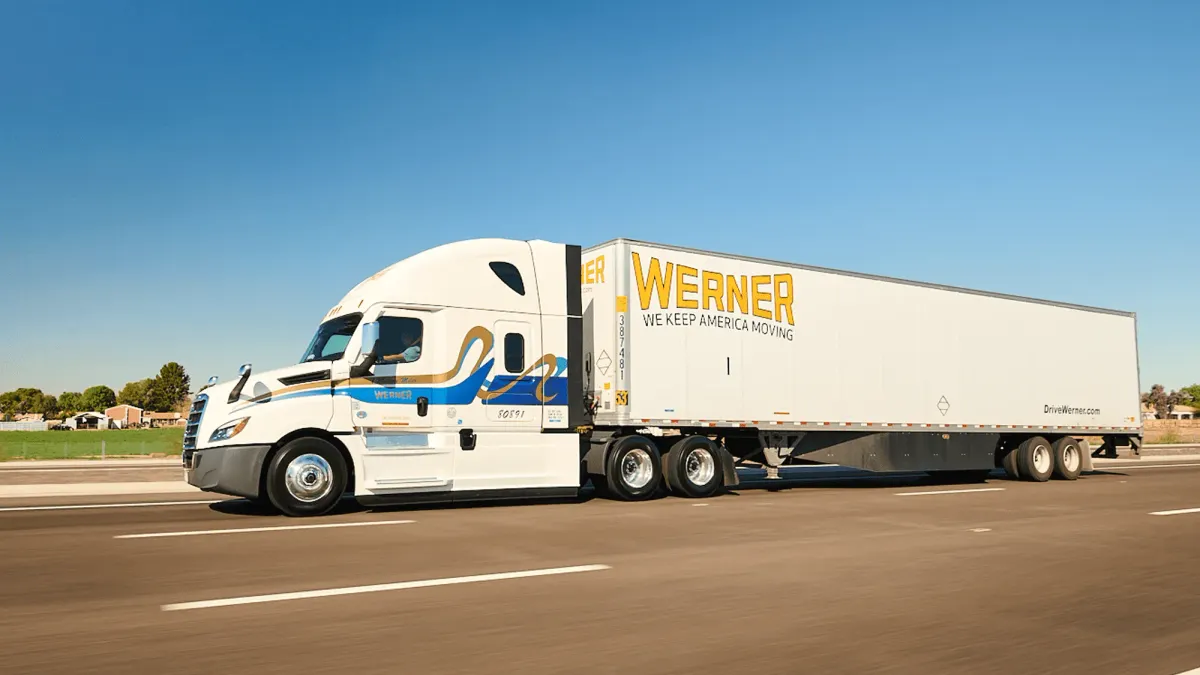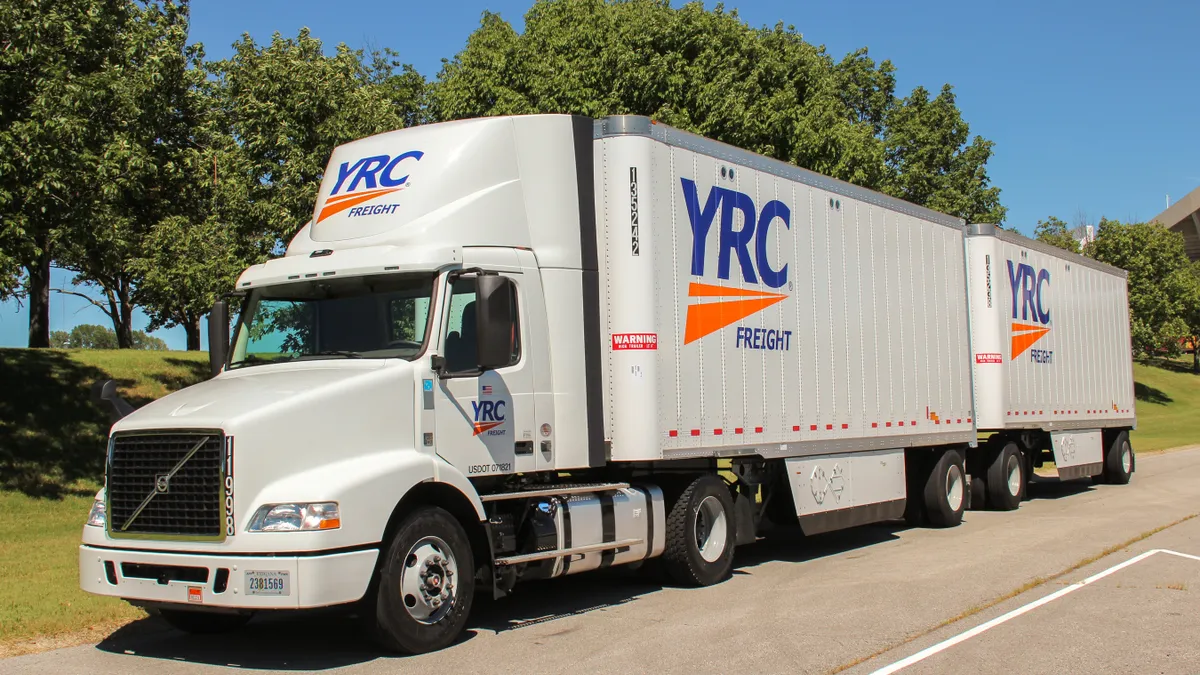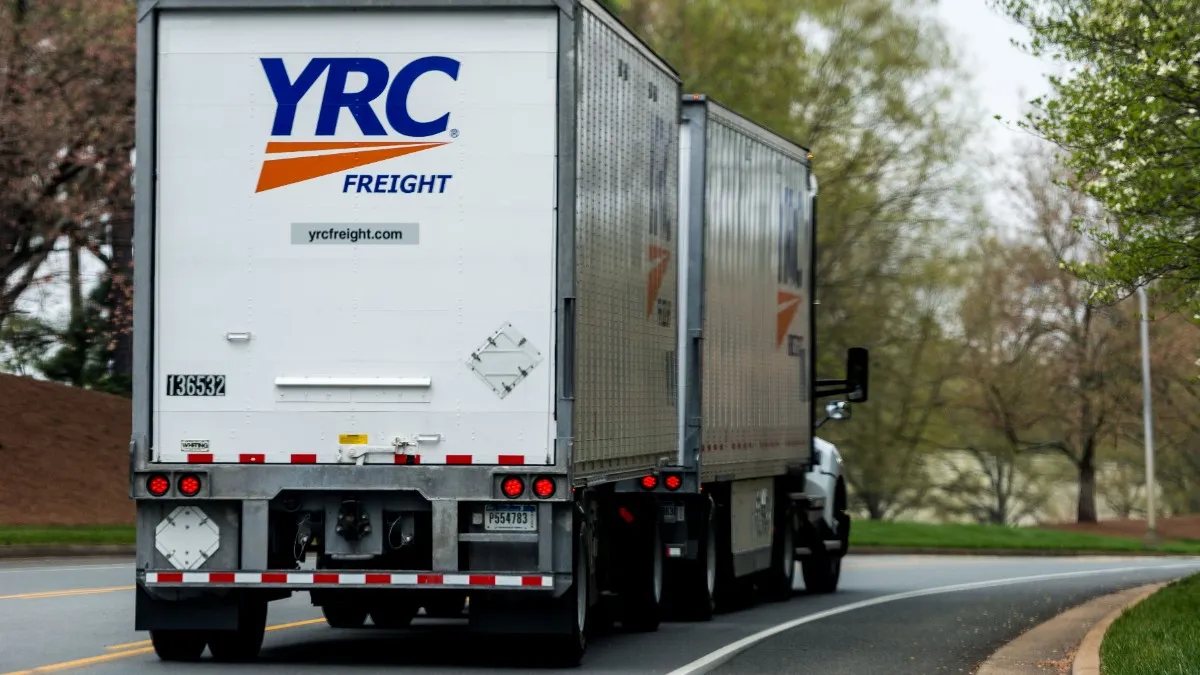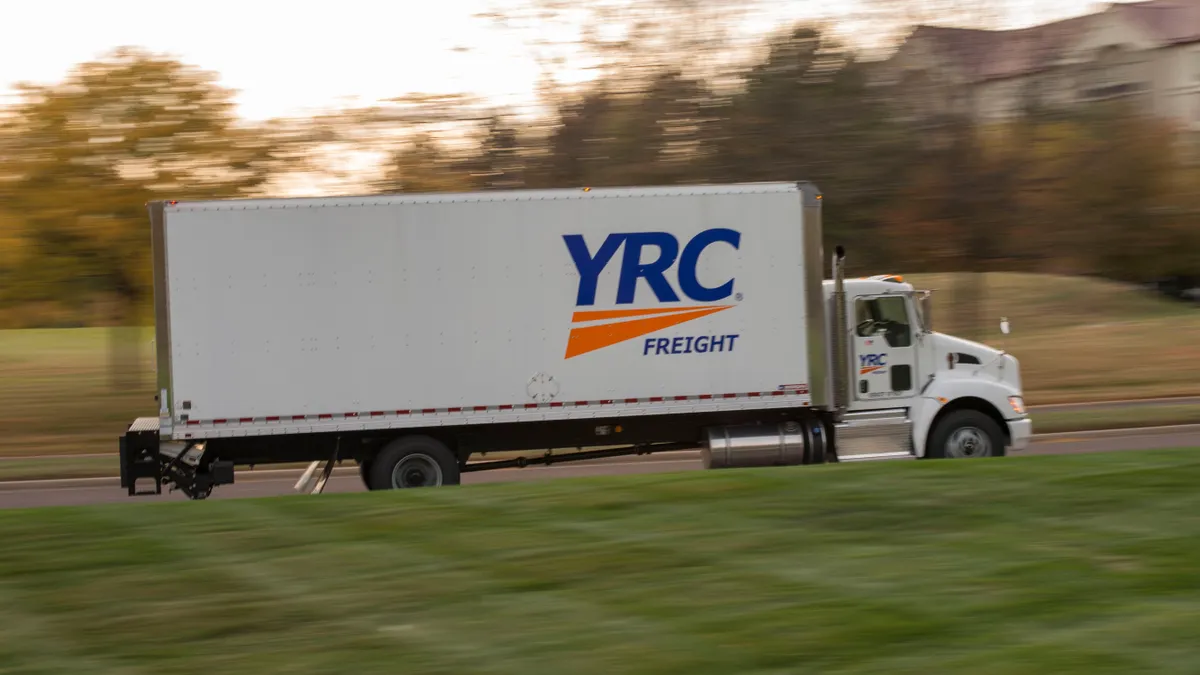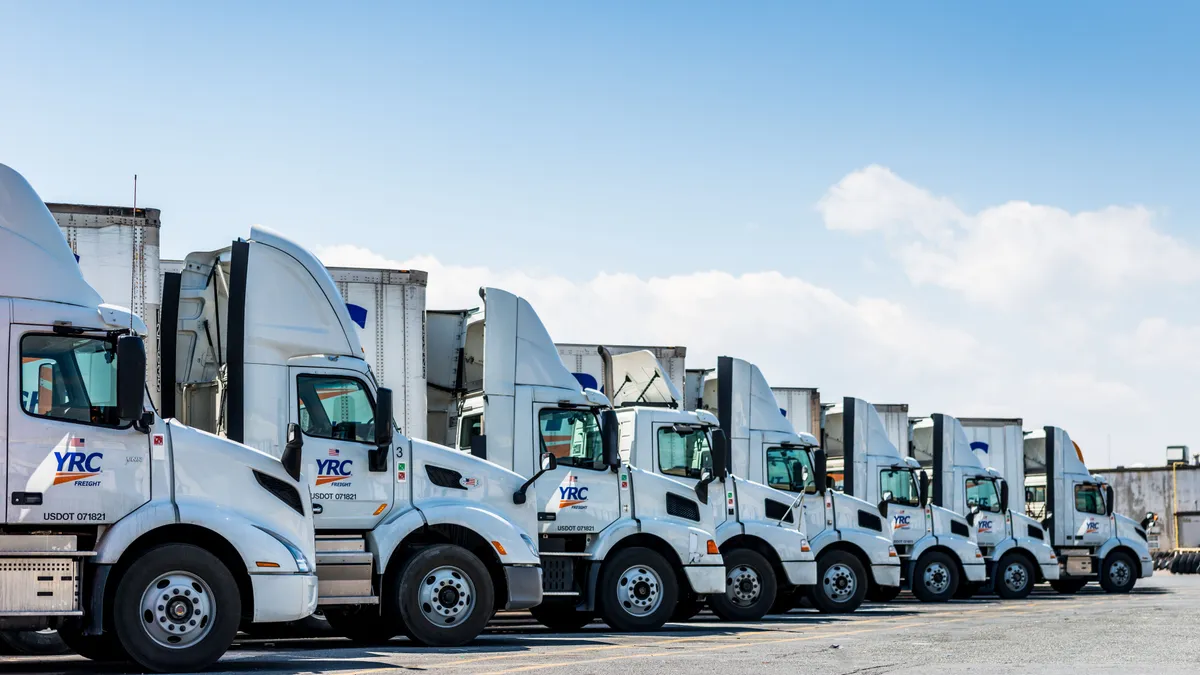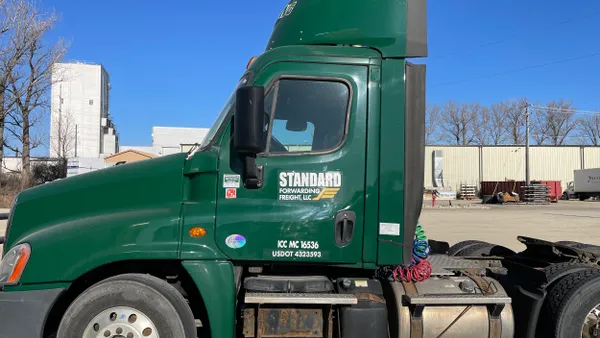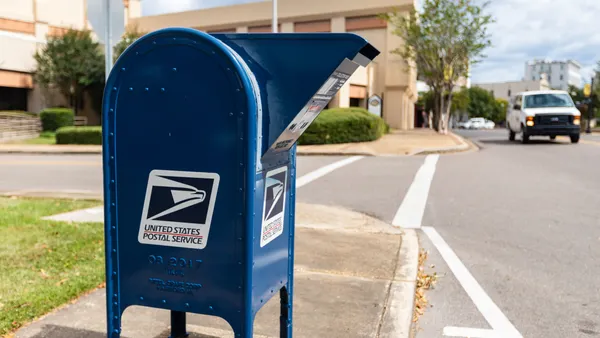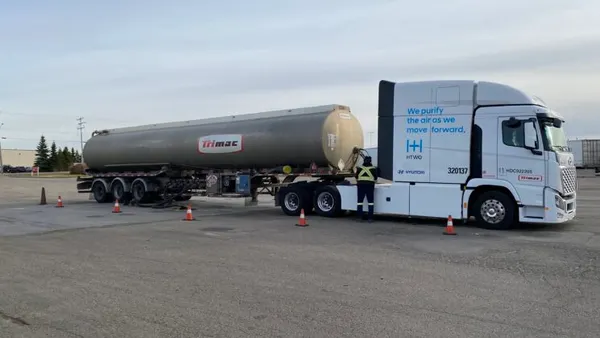Dive Brief:
- Tight capacity and better yield performance led Yellow to declare $27 million operating income in Q2, with CEO Darren Hawkins saying during the company's earnings call on Wednesday that he expects a "steady staircase of improvement" for the LTL carrier. Improving operating income will be key to Yellow meeting the standards of its creditors, including the federal government.
- Hawkins said in Q2, Yellow focused on its big corporate accounts, with their profitable lanes, to help it pull attractive yield and profitability. One such big customer is Walmart.
- Hawkins said the company is poised to pull itself beyond past problems because most of the growing demand in North America is in the middle mile, which is "ideal for LTL carriers, due to the shorter length of haul," he said. Still, because of capacity constraints and driver shortages, Hawkins said Yellow will lean into yield improvements to improve profitability, eschewing tonnage growth for now.
Dive Insight:
Yellow had problems in 2020 with creditors, facing a near-collapse last summer before the federal government threw the large LTL carrier a lifeline in the form of an emergency $700 million loan.
The loan helped Yellow, then YRC before the national rebranding, get rid of older Class 8 tractors that had stuck the carrier with high maintenance costs. Hawkins said in the first half of 2021, the new 1,800 tractors, 2,200 trailers and 400 containers will save fuel and cut costs, while improving safety.
The loan was much needed. The company was lacking liquidity, and Q2 2020 expenditures were only $11.7 million. The company was able to raise that to nearly $144 million in Q2 2021. With a fleet refresh almost finished, the question is, will the booming LTL market last long enough, or plateau at a high enough level, for Yellow to meet its goals?
Now Yellow has to perform well enough to meet its creditors' obligations, and to keep its pension plans funded. That means in Q4, it has to reach an EBITDA goal of $100 million. In Q1 2022, that rises to $150 million, and will rise to $200 million thereafter.
Yellow appears on track to meet such goals, with Q2 EBITDA of $82.9 million.
Hawkins' emphasis on yield is also seen as helping Yellow push to profitability and long-term health. Yield measures the value of customers and lanes using a compound metric that involves revenue, costs, velocity, margin per shipment and value to the network.
Hawkins explained the focus on yield means not having to add capacity to carry more tonnage.
"We are leaning into yield growth over tonnage growth to help manage through the industrywide shortage of drivers and near-term purchase transportation headwinds," Hawkins said. "Favorable year-over-year pricing trends have carried into Q3."
Meanwhile, the company continues to try to control costs by further consolidating under its Yellow brand name, having shed the YRC name earlier this year. Hawkins said Reddaway Trucking's bargaining-unit employees voted to join the rest of Yellow's employees in Q2, and the company hopes a single entity will save money.
"A single operating system across the network is the technology linchpin to get to ... one Yellow network," Hawkins said.

